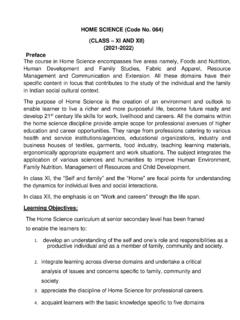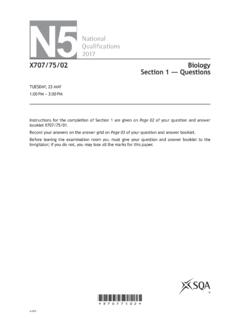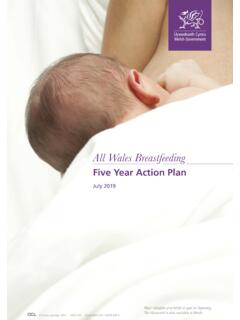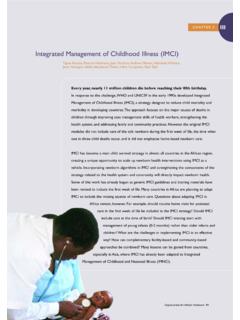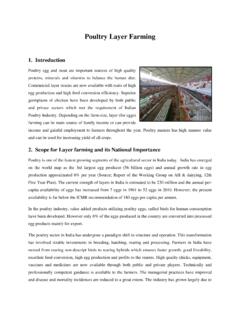Transcription of BREASTFEEDING COUNSELLING A TRAINING COURSE
1 WHO/ : GeneralOriginal: EnglishBREASTFEEDING COUNSELLINGA TRAINING COURSEPARTICIPANTS' MANUALPART ONES essions 1-9 WORLD HEALTH ORGANIZATION CDD PROGRAMMEUNICEFCONTENTSI ntroductionSession 1 Why BREASTFEEDING is importantSession 2 Local BREASTFEEDING situationSession 3 How BREASTFEEDING worksSession 4 Assessing a breastfeedSession 5 Observing a breastfeedSession 6 Listening and learningSession 7 Listening and learning exercisesSession 8 Health care practicesSession 9 Clinical Practice 1 INTRODUCTION Back to CONTENTSWhy this COURSE is neededBreastfeeding gives children the best start in life. It is estimated that over one millionchildren die each year from diarrhoea, respiratory and other infections because they arenot adequately breastfed. Many more children suffer from unnecessary illnesses thatthey would not have if they were breastfed. BREASTFEEDING also helps to protect mothers'health.
2 The Programme for the Control of Diarrhoeal Diseases has long recognised the need topromote BREASTFEEDING to prevent diarrhoea in young children. More recently it hasbecome clear that BREASTFEEDING is important also in the management of diarrhoea, toprevent dehydration, and to promote recovery. The World Health Organization and UNICEF recommend exclusive BREASTFEEDING frombirth for the first 4-6 months of life, and sustained BREASTFEEDING together with adequatecomplementary foods up to 2 years of age or beyond. However the majority of mothersin most countries start giving their babies artificial feeds or drinks before 4 months, andmany stop BREASTFEEDING long before the child is 2 years old. The common reasons forthis are that mothers believe that they do not have enough breastmilk, or that they havesome other difficulty BREASTFEEDING . Sometimes it is because a mother is employedoutside the home, and she does not know how to breastfeed at the same time ascontinuing with her job.
3 Sometimes it is because there is no-one to give a mother thehelp that she needs, or because health care practices and the advice that she receivesfrom health workers does not support workers such as you can help the mothers and children for whom you care tobreastfeed successfully. It is important to give this help, not only before delivery and during the perinatal period, but also during the whole of the first and second year of achild's life. You can give mothers good advice about feeding their babies at all times,when they are well and when they are sick. You can help mothers to ensure that theirmilk supply is adequate. You can help with BREASTFEEDING difficulties, and you can helpemployed mothers to continue BREASTFEEDING . You may feel that you have not been adequately trained to give this kind of help.
4 In thepast, BREASTFEEDING COUNSELLING and support skills have seldom been included in thecurricula of either doctors, nurses, or midwives. This COURSE aims to give you TRAINING inbasic BREASTFEEDING COUNSELLING skills, which should enable you to give mothers in yourcare the support and encouragement that they need to breastfeed the COURSE you will be asked to work hard. You will be given a lot ofinformation, and you will be asked to do a number of exercises and clinical practices todevelop your BREASTFEEDING COUNSELLING skills. Hopefully you will find the COURSE interesting and enjoyable, and the skills that you learn will make your work withmothers and babies in future more helpful for them, and more rewarding for you. The COURSE and the manualBreastfeeding COUNSELLING : A TRAINING COURSE consist of 33 sessions, which can bearranged in different ways to suit the local situation.
5 Your COURSE Director will plan thecourse that is most suitable for your needs, and will give you a time-table. This book, the Participants' Manual, is your main guide to the COURSE , and you shouldkeep it with you at all times, except during clinical practice sessions. In the followingpages, you will find a summary of the main information from each session, includingdescriptions of how to do each of the skills that you will learn. You do not need to takedetailed notes during the sessions, though you may find it helpful to make notes ofpoints of particular interest, for example from discussions. Keep your manual after thecourse, and use it as a source of reference as you put what you have learnt into practice. Your manual also contains:-copies of the key overheads that you might want to memorise-forms, lists and checklists for exercises and clinical practice;-written exercises that you will be asked to do will receive separate copies of the forms, lists and checklists to use for clinicalpractice sessions, so that you do not have to carry your manual at these times.
6 You will receive Answer Sheets for each written exercise after you have done theexercise. This enables you to check your answers later, and to study any questions thatyou may not have had time to will also receive a copy of the following reference materials:-The book Helping Mothers to Breastfeed, AMREF Revised Edition Infant Health: A Health Workers Guide to the International Code ofMarketing of Breastmilk , Promoting and Supporting BREASTFEEDING : The Special Role of theMaternity Services. A joint WHO/UNICEF Statement, to the Global Criteria for Baby Friendly Hospitals: AcceptableMedical Reasons for Supplementation-Annex on BREASTFEEDING and Maternal Medication: Recommendations fordrugs in the Essential Drugs ListThe COURSE Director will recommend parts of these reference materials for you to readin preparation for some sessions, or after sessions to help you to remember what youhave learned.
7 Session 1 Back to CONTENTSWHY BREASTFEEDING IS IMPORTANTI ntroductionBefore you learn how to help mothers, you need to understand why BREASTFEEDING isimportant, and what its benefits are. You need to know the differences betweenbreastmilk and artificial milks, and the dangers of artificial feeding . (Overhead 1/1) (Overhead 1/7)Variations in the composition of breastmilkColostrum is the breastmilk that women produce in the first few days after delivery. It isthick and yellowish or clear in milk is the breastmilk that is produced after a few days. The quantity becomeslarger, and the breasts feel full, hard and heavy. Some people call this the breastmilk`coming in'. Foremilk is the milk that is produced early in a feed. Hindmilk is the milk that is produced later in a feed. Hindmilk looks whiter than foremilk, because it contains more fat.
8 This fat providesmuch of the energy of a breastfeed. This is an important reason not to take a baby off abreast too quickly. He should be allowed to continue until he has had all that he wants. Foremilk looks bluer than hindmilk. It is produced in larger amounts, and it providesplenty of protein, lactose, and other nutrients. Because a baby gets large amounts offoremilk, he gets all the water that he needs from it. Babies do not need other drinks ofwater before they are 4-6 months old, even in a hot climate. If they satisfy their thirst onwater, they may take less (Overhead 1/9)Psychological benefits of breastfeedingBreastfeeding helps a mother and baby to form a close, loving relationship, which makesmothers feel deeply satisfied emotionally. Close contact from immediately after deliveryhelps this relationship to develop. This process is called cry less, and they may develop faster, if they stay close to their mothers andbreastfeed from immediately after delivery.
9 Mothers who breastfeed respond to their babies in a more affectionate way. Theycomplain less about the baby's need for attention and feeding at night. They are lesslikely to abandon or abuse their studies suggest that BREASTFEEDING may help a child to develop intellectually. Low-birth-weight babies fed breastmilk in the first weeks of life perform better onintelligence tests in later childhood than children who are artificially (Overhead 1/13) (Overhead 1/14)RECOMMENDATIONS Start BREASTFEEDING within -1 hour of birth Breastfeed exclusively from 0-4 months of age complementary foods can begin between 4-6 months(exact age varies) Give complementary foods to all children from 6 monthsof age Continue BREASTFEEDING up to 2 years of age or beyondTERMS FOR INFANT FEEDINGE xclusive BREASTFEEDING :Exclusive BREASTFEEDING means giving a baby no other food or drink, including nowater, in addition to BREASTFEEDING (except medicines and vitamin or mineral drops;expressed breastmilk is also permitted).
10 Predominant BREASTFEEDING :Predominant BREASTFEEDING means BREASTFEEDING a baby, but also giving smallamounts of water or water-based drinks - such as tea. Full BREASTFEEDING :Full BREASTFEEDING means BREASTFEEDING either exclusively or predominantly. Bottle feeding :Bottle feeding means feeding a baby from a bottle, whatever is in the bottle,including expressed breastmilk. Artificial feeding :Artificial feeding means feeding a baby on artificial feeds, and not BREASTFEEDING atall. Partial BREASTFEEDING :Partial BREASTFEEDING means giving a baby some breastfeeds, and some artificialfeeds, either milk or cereal, or other food. Timely complementary feeding :Timely complementary feeding means giving a baby other food in addition tobreastfeeding, when it is appropriate, after the age of 4-6 months. Session 2 Back to CONTENTSLOCAL BREASTFEEDING SITUATIONTry to answer the following questions for the area where you each question, put a circle round the answer `few', `half', or `most', whichever isclosest to what you have many babies start to breastfeed?










